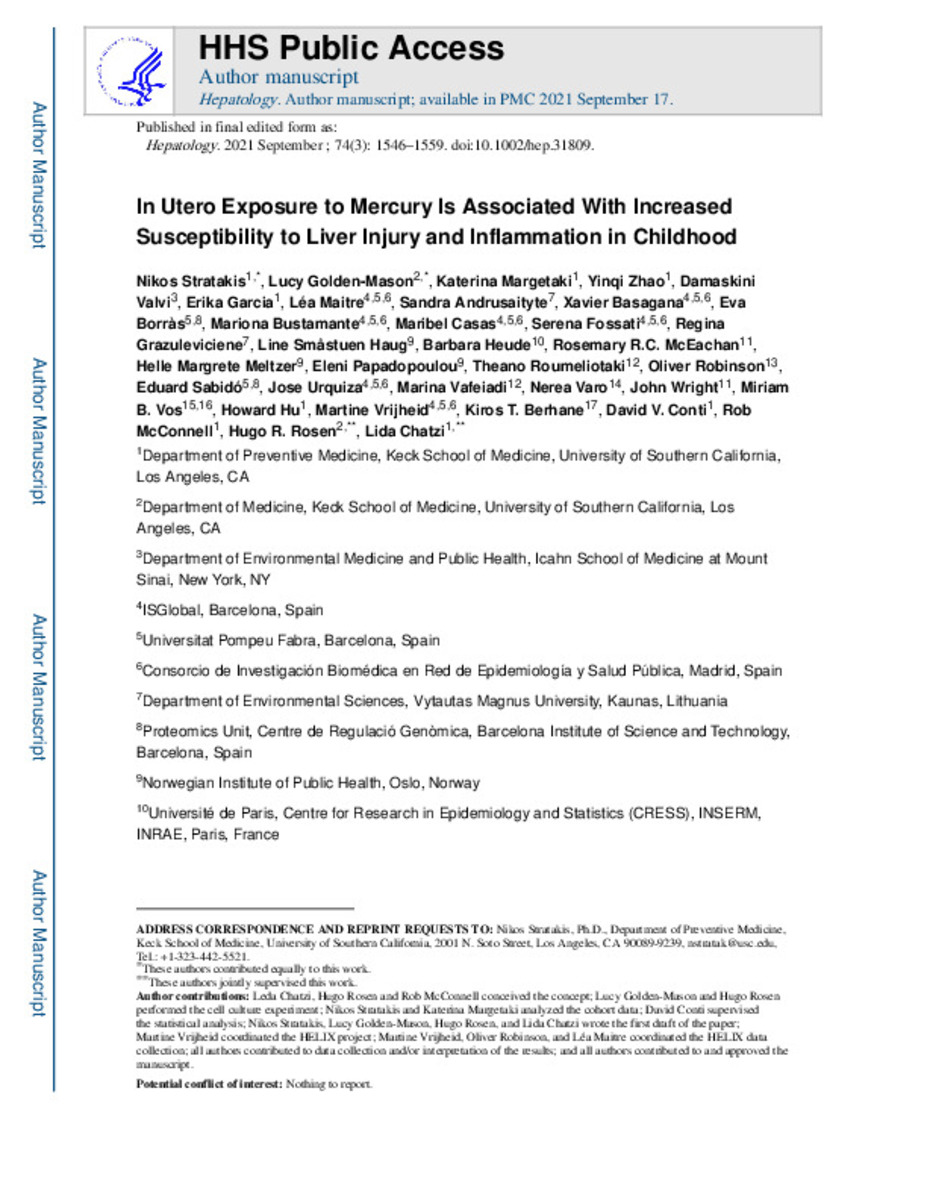In utero exposure to mercury is associated with increased susceptibility to liver injury and inflammation in childhood
Files in This Item:
Statistics and impact
Items in Dadun are protected by copyright, with all rights reserved, unless otherwise indicated.











